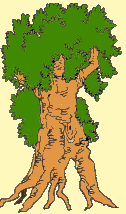Caesalpinia bonduc.
Caesalpinia bonduc.
Vernacular names: Adjikou in goun and FON in BENIN, Awalé in RCI Bonduc, cadoque, cadoc, cassie (Fr).
Bonduc nut, fever nut, guilandina seed, nicker nut (En). Inimbo, inimboja, nogueira de bonduque, olho de gato, silva da praia (Po). Mkomwe, mnamu, mburuga (Sw).
Uses and description
Throughout the range of Caesalpinia bonduc in Africa, its leaves, bark, and roots are used to treat fever, headache, and chest pain; they also serve as a dewormer. In West Africa, the plant is used as a rubefacient and tonic in the treatment of jaundice, diarrhea, and rashes. The roots are known to be aphrodisiacs. The seed and decoctions of the leaves and roots are taken to treat asthma and complications during menstruation, and to prevent miscarriages; they are also taken as eye drops to treat internal blood clots in the eye. In Tanzania, the almond from the powdered seed is taken with water to treat diabetes mellitus. The seed oil is used to treat rheumatism. A bitter extract of the seeds, known as 'poor man's quinine', is used against malaria. In high doses, it is believed to be toxic.
Direction of use
--Fever and headache.
Take a decoction of the leaves and roots. 2 glasses per day for 7 days.
- Chest pain. Massage the chest with the hot decoction of the leaves.
--Sexual weakness and asthma. Take the decoction of the leaves and roots.
--Painful periods Drink a decoction of the leaves and roots during menstruation
. --Diabetes Take as a food supplement the powder of the seeds.
Add a comment























